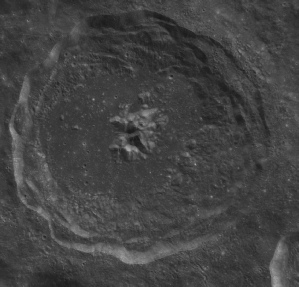


A few weeks ago I had the misfortune to watch a video of a 1996 lecture by Alex Collier. It annoyed me because it is full of made up nonsense. This is one version of it.
The crux of the biscuit is that Collier claims to have received information from alien space beings.
They tell him special super secret stuff.
Stuff about our Earth, the Moon, and Mars. Stuff about sunlight being the source of gravity (it isn’t) instead of ‘rotation’ (nope, that’s not it either). Stuff about electrons re-
It’s all absolute bollocks.
I’ll get the ball rolling with his first claim: that a secret NASA photo somehow “Slipped through the cracks” and exposed the truth about an entrance to the hollow Earth.
He starts to make this claim at around 25:35 in to a backdrop of Apollo 17’s “Blue Marble” image, and he actually gets a round of applause from the idiots lapping it up.
A round of fucking applause.
Anyhow, this is what he says:
"On the next slide I'm going to show you a NASA photograph that proves that there's an opening at the North Pole.
You can find this photograph in a book called 'Our Violent Universe' by Nigel Calder. It was first released in England, and I don't know how this one slipped through the cracks but it did, thank goodness.
This was taken in 1979."
He the advises his audience to get hold of the book -
Good advice, that’s exactly what I did -


Wow -
The book was actually printed in 1969 on the back of a TV programme -


Oops!
So, this book was published 10 years before Collier claims the photograph was taken!
Hmm -
Well, nope, it was actually taken on November 10th 1967 by the ATS-
Here it is again, with Google Earth in both the same orientation and slightly rotated and with a superimposed grid to prove what we’re seeing:

Furthermore, far from being secret it was widely available, along with other images from the satellite.
Below left you can see it on the cover of counter culture magazine “Whole Earth Catalog” from Autumn 1968.
As well as its use in weather forecasts it was released, along with hundreds of other ATS images, in this compilation of them -
It was also published (in black and white) in ‘The Origin of NASA Names’, published in 1976 (which I also own), and shown below right. You can also find it in the 1968 publication America in Space: the first decade, where it is mislabelled as an ATS-

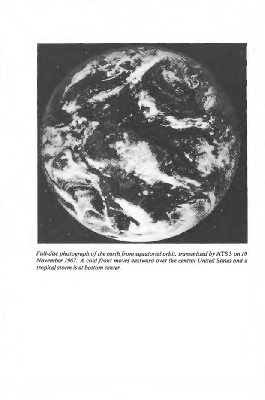
Even worse, it was used in a truly dreadful film called ‘Horror Express’, released in 1972, in which the eyeball fluid of an alien space monster records what is supposedly it Martian home. Here’s a zoomed crop of a screenshot compared with ATS.

So, far from being a secret photograph that slipped through the cracks of our evil overlords, it was commonly available,and Collier reveals himself to at best a bad researcher, at worst a liar.
Oh, and why didn’t Apollo astronauts see it as Collier asks? Because it isn’t there -



It’s not in this Apollo 16 photograph either, as like all the others it just shows a weather system. The photo below left is also often claimed to show a polar entrance to inner Earth, inconveniently placed some distance from where Collier claims it is. The one below right shows the Russians not seeing it either.


The fact is that the reason astronauts, and cosmonauts, nor any probe or space station or satellite has never commented on an opening at the poles is because there just isn’t one, and the only hole here is in Collier’s argument and the one from which he speaks. It isn’t his mouth.
So what else does this babbling loon talk about? Well, at about 34 minutes he reveals an image that he claims to show clear signs of alien construction. Here is his slide.


He doesn’t say what image it is, or where it is, but I can tell you exactly: it’s Aitken, and it’s from Lunar Orbiter image II-
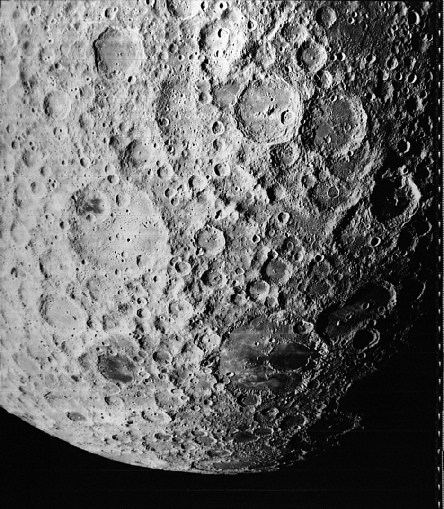

But wait, I hear you cry, that’s hardly fair -
You mean photos in a book like this?
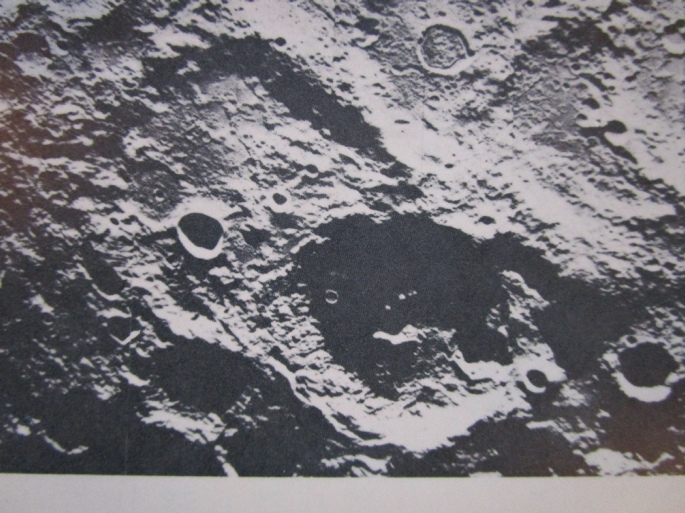
That’s from my own copy of ‘The Moon as Viewed by Lunar Orbiter’, and you can clearly see it is of much better quality that the one he is showing on screen. Here’s my copy of the book, open at no page in particular, just to prove I have it.


Here’s what he actually says:
"I want you to focus on this structure right here. For those of you who are architects, please feel free to you know, say something about this. This area right here, you can see the curves, the angles, there's another bridge here.
I want you to notice these lit up objects inside the bottom of the crater."
He also claims it is inhabited by extra-
Well, they aren’t domes, they are small craters on Aitken’s crater floor. You can make them out very nicely in other lunar orbiter images (below left), and also in ones taken by the Soviet Zond-
Zond-


The other, better lit lunar orbiter image also shows much more clearly that there are no bridges or structures, and again I have this as hard copy in books available long before his talk.
We can also take advantage of modern technology to look across the central peak towards the ‘structures’ using Japan’s 3DGIS software mapping its Kaguya data (below left) and also look at China’s data (below right).
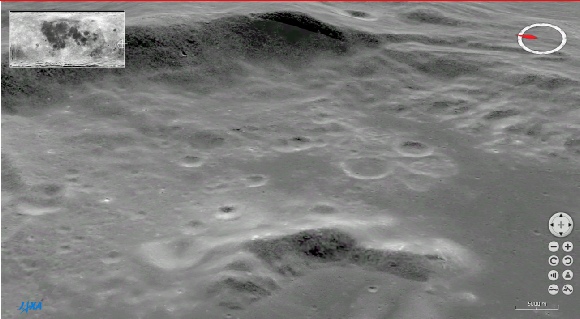
Not a single bridge or structure to be seen, and that the one of the areas he calls a structure is actually the edge of the large crater on the edge of Aitken’s northern wall. You can get more information about Aitken’s formation in ‘Apollo over the moon: a view from orbit’ which has a nice Apollo Metric Mapping camera image of it. I have the original book form of it, and it was out long before Collier’s talk, so why didn’t he look?
Now, Collier can be forgiven for not having access to modern data, but he can be forgiven for lazy research, bad referencing, not using all the sources he could have used, and deliberate deception
There are no aliens in Aitken crater, there never have been, my alien contacts told me so.
For his next trick he presents another unnamed photo and another unnamed crater, claiming this time to have identified a 21 mile long bridge under which the sun is shining.
The gridded globe shows that you can’t even see the north pole on the photograph thanks to the orientation of the Earth in relation to the satellite, and hopefully it’s now obvious that what he’s claiming is the north pole is what normal people actually call Greenland.
And here’s a close up showing Greenland in more detail, again with Google Earth for comparison.
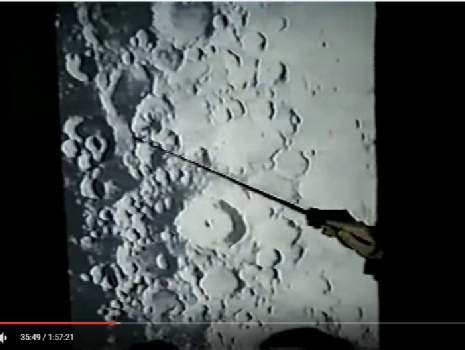
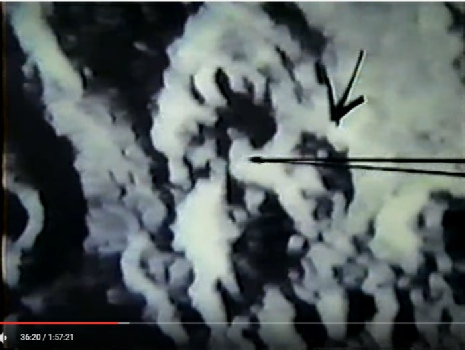
I can help him out here by saying that the area he is pointing at is north-


As the photographs from my book show very nicely, the supposed ‘bridge’ is nothing of the sort -
And just to confirm it even further, here are Chinese (below left) and Japanese (below right, rotated to look across the ‘bridge’) views of that exact area:



Collier also asks how our astronauts missed this ‘feature’ -
As before, Collier didn’t have access to the modern views when he made that presentation, but he did have access to much more detailed versions of the Lunar Orbiter image than he used, and he did have access to images from terrestrial telescopes. Not telling his audience where he’s getting his source material from to allow them to look for themselves is as dishonest as pretending there are alien structures in full view of the Earth.
Next up is actually the first close up of a lunar feature Collier uses before the two examined above, but I’ve only just found where it is hence it appears out of sequence.
Here’s the frame he uses (below left) as he presents it, and next to it is a photograph from my own copy of ‘The Moon as viewed by Lunar Orbiter’. This is yet another photograph that has been used form this volume and it’s my view that this is pretty much all Collier has -


Once again Collier rotates the image -
Collier’s claim is that the feature is a pyramid. Anyone with eyes can see that it is nothing of the sort. Apparently Andromedans told him that pyramids are like the go to shape for alien builders all over the place. On the moon, however, there are none. Not a single one, and certainly not the 4 that Collier claims. This object certainly isn’t one -
It’s even more evident in Japan’s 3DGIS software, shown here below right looking roughly north across the crater, and below left in an original Kaguya image:

Not a pyramid, not a crater, and Collier knows full well it isn’t because the book he got the image from tells him exactly what it is.
For the next image Collier actually credits a source, although he still gets it wrong by saying that the lunar orbiter image he has used was taken in 1966, when in fact it is V-
“Look at this, just sitting there parked”
Here’s what he’s pointing at (below left) compared with my copy from the book he’s using (below right):

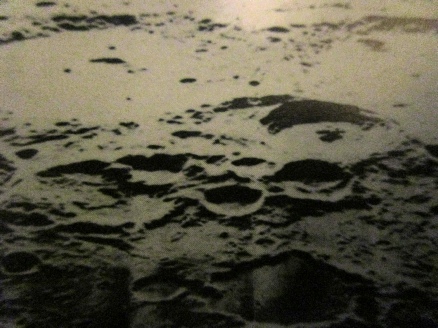
The crater he is pointing at is Finsen on the far side, and the object he is claiming is a UFO parked up is the crater’s central peak complex, and what looks like a shadow being cast by something is actually just one part of that complex, as can be seen when you zoom into the online version of the image.

China (below left) and Japan (below centre confirm that this is what the central peak looks like, and the Japanese vertical view gives a shot of the central peak area, lit by the sun.
So instead of thinking ‘What could this shape be?’ Rather than look at what was well known about crater structure and formation and seeing if it could fit in with existing theories, he went straight to ‘10 mile alien spaceship hovering in a crater’.
Ludicrous.
Even more ludicrous is his next claim. He loads of a slide of Icarus crater, which again he doesn’t identify, but I know because I looked that he uses (again from the same book as before) image II-
There’s just one problem, and that problem is revealed when you compare the image from the book he has used (below left) with the image he shows on screen (below right):


The problem is that what Collier is claiming is the shining remains of a former dome in the bottom left is absolutely not there in the book from which he got the original photo. The only reason I can think of for this is that the shine is from the camera taking the photograph, or from a light somewhere in the room in which the photograph of the page has been taken. It is absolutely not the remains of a dome, as can be seen by Japan’s 3D view.

Understandable mistake based on what came out of a camera, or deliberate deception and fraud? I know where my money is. I’m not going to touch his claims that Icarus crater was a domed city destroyed by particle beams by aliens from Orion with a shitty stick.
He really goes to town on the next image which, as usual is unattributed and unidentified. We’ll get that bit out of the way to start with. As usual it is from ‘The Moon as viewed…’ and is image II-
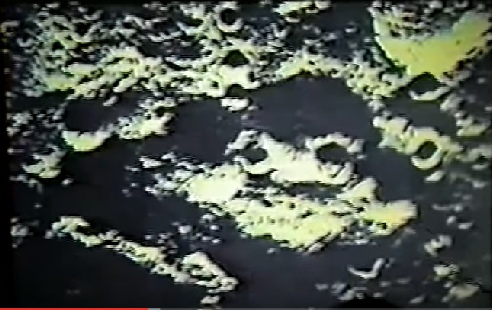
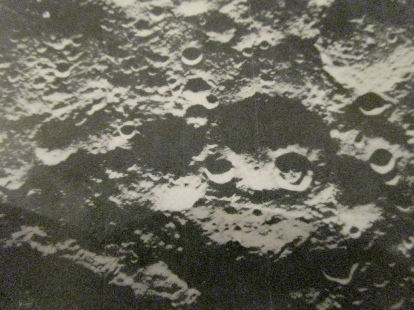
What he does next is zoom on the area at the bottom of the crater, and starts pointing out bridges and structures. Here it is below left together with the same area from my book.

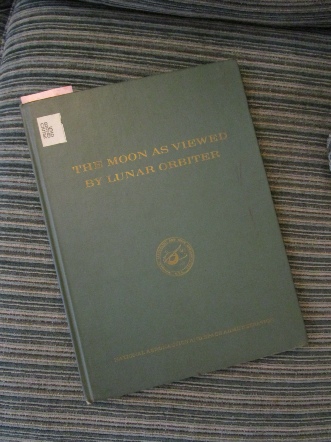
Collier first outlines an area that he describes as being ‘hangars’, which is the brightest ridge to the right of centre in the bottom half of the image, and all of the region in that brightly lit area is inhabited by human beings. He claims it to be full of structures
Seriously.
He claims that the area shown in the image below left is artificial (he describes it as a ‘structure’), as is the one below right purely on the grounds that it sharp-


I can’t see anything artificial in either of them, and there’s more of an argument that the one on the left looks like a face than anything else (it isn’t -
The Chinese and Japanese images certainly don’t lend any credence to his ideas either. First let’s get the regional overview -
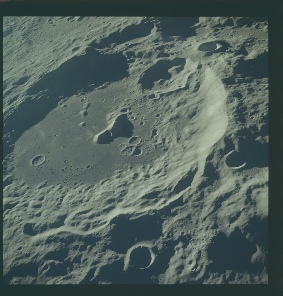
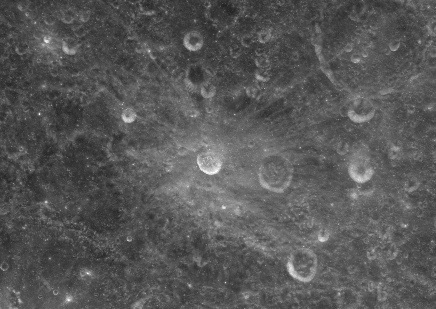

Now let’s zoom in to the two smaller craters. China’s are the upper two, Japan on the lower two.
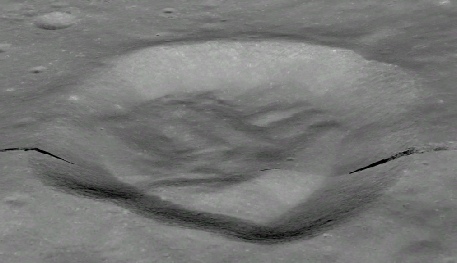

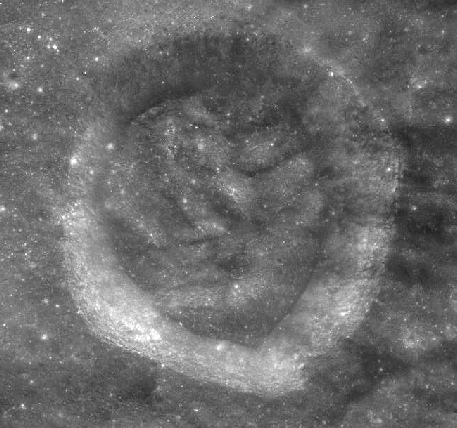
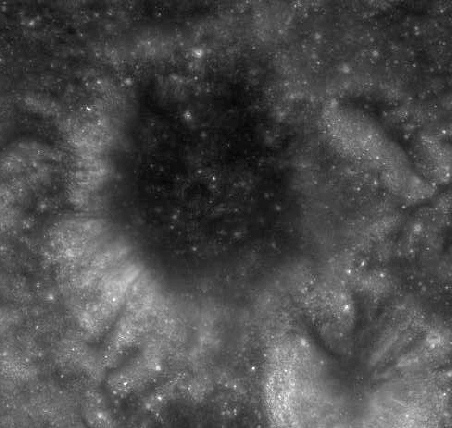
The modern images taken by countries other than the US (because we all know these people don’t like anything that smells of NASA) definitely don’t show any structures, and the crater features seem a little less sharp when viewed in higher detail. But wait, poor Alex didn;t have this luxury did he? Well, no -


No structures, no buildings, no hangars, not a sign of human occupation, nothing. Why? Because it’s made up bollocks.
We next have a very brief slide where Collier points at an object in a crater and says that it is “not supposed to be there”. As usual he doesn’t identify where it is or what photograph he is looking at, but as usual we can find it in the book he has used as his source. The photograph in question is V-


What is he telling people shouldn’t be there? It’s quite obviously the crater’s central peak -


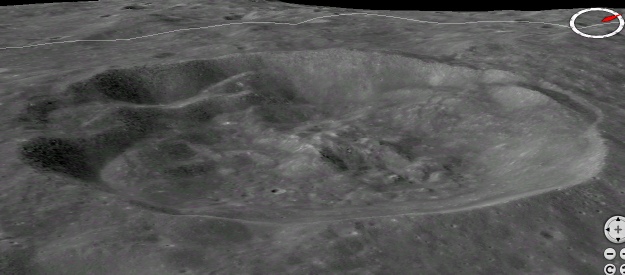
And as usual, China and Japan confirm the details shown in lunar orbiter, and that it shows central peaks, not alien stuff. In the lower image, India shows the top half of the craters.
So Collier can use his misdirection and ‘Emperor’s new clothes” tactics all he likes. Everything in that crater is as it should be, and is exactly the same today as it was in 1967. Nothing artificial is there, no aliens are hiding.
Collier’s next stop proved a little trickier, and in some ways I’ve been successful but in others not. Collier’s image is this one, and he claims that the object towards which he is pointing is a two mile long metal shard.
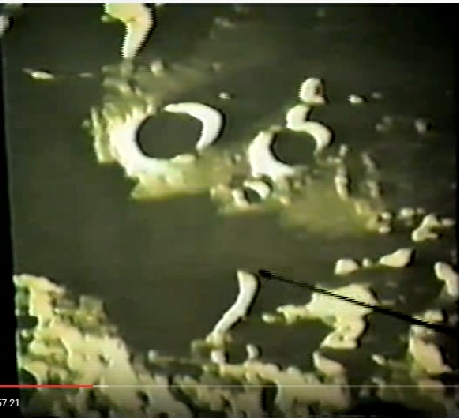
The lack of lines running across the image suggests that this isn’t a lunar orbiter image and certainly there aren’t any images that exactly match this one -

Naturally Collier has presented the image upside down to make things more difficult, but anyone can see Clavius and realise that his two mile long shard is actually the 20 mile long sunlit rim of Porter crater on Clavius’ rim.
I’m not going to bother with Chinese and Japanese stuff, I’m just going to post another couple of amateur telescope shots showing it better lit, proving that it is absolutely not the location of a 2 mile, or 20 mile, or any kind of length metal shard. Google it -

This page has probably overloaded your browser, so here’s a brand new page to chew over.
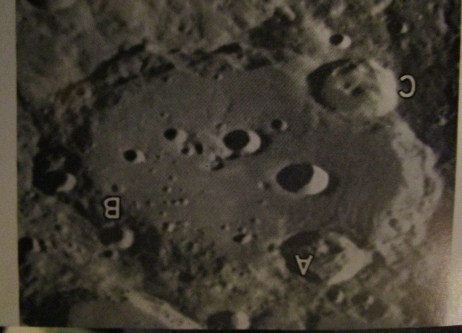 Back to the bunker
Back to the bunker
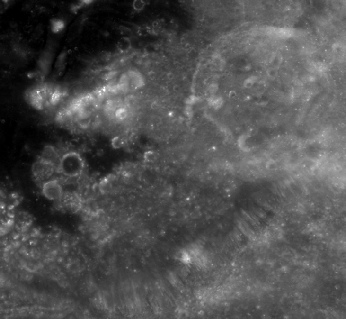
We also have a view from India in the form of their Chandrayaan probe’s image (below left)
Collier’s other problem is that because this is the Tycho region, it is one of the most obvious craters visible from Earth, and any feature 21 miles long is going to be visible from Earth, This is demonstrated very nicely by an taken by the Pic du Midi telescope in 1966 in the image below right:



